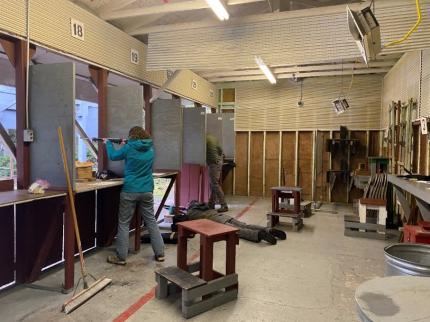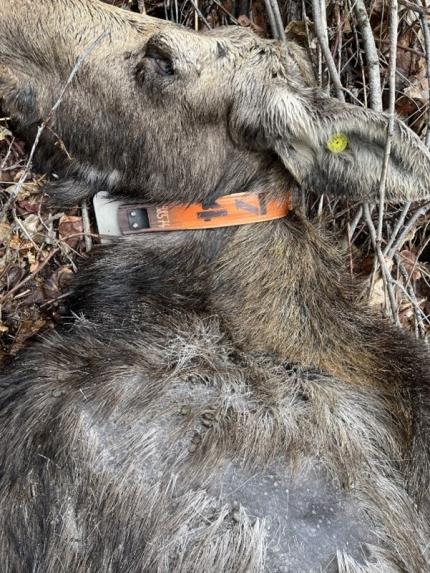
Wildlife Program report: Apr. 1-15, 2024
Managing Wildlife Populations
Golden Eagle Mortality: Biologist Brinkman coordinated with the wildlife program manager from the Spokane Tribe that found a deceased golden eagle with a GPS transmitter on the Spokane Reservation. This coordination also included Washington Department of Fish and Wildlife (WDFW) Biologist Vekasy, Wildlife Research Scientist Watson, and a biological consulting organization to determine the owner of the transmitter and learn about the history of the bird. They discovered the bird was marked in 2017 and provided five years of location data before the transmitter stopped functioning. Samples will be submitted to examine lead exposure levels.
Moose Mortality Notification: The moose team received a mortality notification for one of the cow moose collared in February. Biologist Brinkman met with three other WDFW biologists from the moose team to investigate the location of the mortality signal. The cow moose carcass was found intact with no evidence of predator activity. The team of biologists conducted a full field necropsy and collected samples that will be sent to the Washington Animal Disease Diagnostic Lab (WADDL) for analysis and determination of cause of death.

Providing Recreation Opportunities
Access Areas: North Region 1 Water Access Area Manager Dziekan and Natural Resource Technician Brant have been busy cleaning access area restrooms in preparation for spring fishing and boating season. The work included picking up litter and cleaning restrooms, and they used backpack blowers to clear the parking areas of pine needles and other debris that accumulated during the winter. Backpack blowing is very much a routine task, but this scale of backpack blowing takes a lot of time.
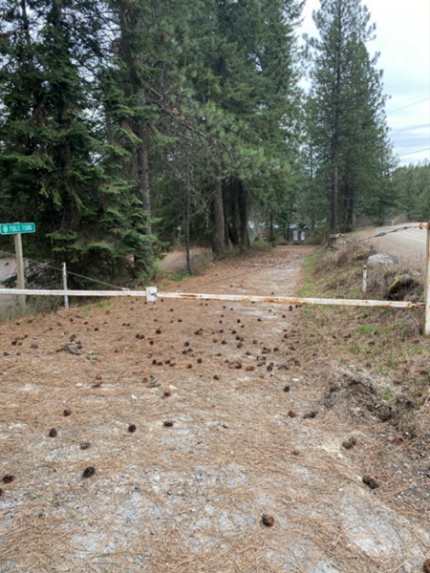
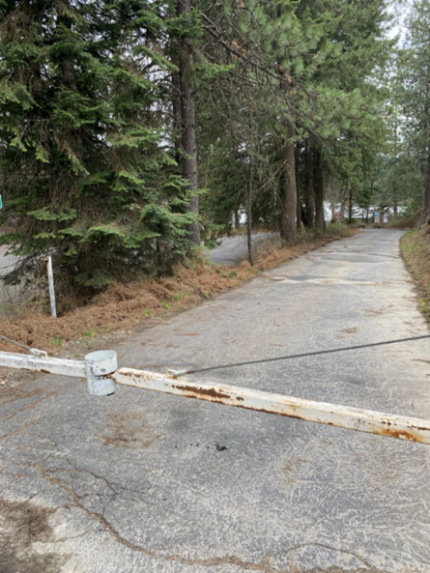
Conserving Natural Landscapes
Controlled Burning: Wildlife area staff members conducted controlled burns of agricultural fields on Smoothing Iron Ridge. They burned wheat stubble off food plot fields in preparation for weed control and spring plantings. They also burned off a perennial grass field due to increasing ventenata and to stimulate new perennial grass growth for the elk. This project was not completed due to the rain so staff members will need to finish it up once nicer weather arrives.

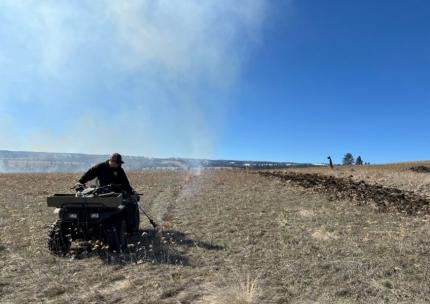
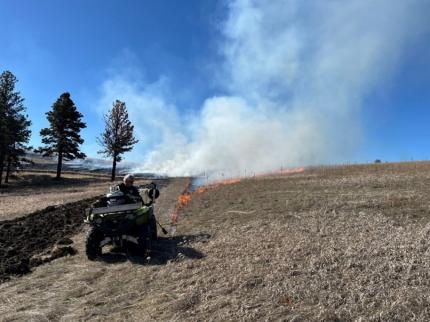
Weed Control: Biologist Woodall sprayed parking and access sites on Cloverland and Meyers Ridge roads. He also coordinated with a contractor who completed an aerial spray project for Mediterranean sage.

Tire Cleanup: Wildlife Area Manager Dingman contacted Columbia County Road Department about disposing of approximately 40 tires and a dryer that were picked up along Hartsock Grade by wildlife area staff members. The county covered the transfer station cost to dispose of everything since it is a county road and right-of-way. Tritt hauled the full dump trailer to the Columbia County transfer station and disposed of the tires and dryer.
Noxious Weed Control: Natural Resource Technicians Jensen and Tritt started spraying the field along Oliphant Road for yellow star thistle and houndstongue. They also sprayed weeds in the area of the Rainbow Lake spoils pile and the field by Campground 2. Tritt repaired one of the all-terrain vehicle spray tanks so all three sprayers are now functioning. Wildlife Area Manager Dingman sprayed weeds around the headquarters fields. Dingman set up some monitoring plots in upper Tumalum Creek for future monitoring of noxious weed infestations.
Habitat Planting: Natural Resource Technician Moberg assisted Private Lands Biologist Thorne-Hadley in planting 120 shrubs on private land that is enrolled in an access agreement program. The landowner tagged along and showed us an additional site with a water guzzler that would be an ideal candidate for future habitat work.
Hunting Access Programs: Natural Resource Technician Moberg and Private Lands Biologist Thorne-Hadley investigated a 2,000+ acre property whose owner has expressed interest in joining the private lands access program. Moberg also met with a representative of Puget Sound Energy to learn more about the Columbia County Windfarm Recreation access program.
Habitat Plots and Plantings: Private Lands Biologist Nizer met with a landowner to mow a food plot with the tractor and prepared another site for a planting. Nizer also led a crew to plant 1,700 trees for turkey roosting habitat. In total, there were five volunteers for the Saturday project. Nizer also met with Private Lands Biologist Baarstad to plant 1,000 shrubs on a Hunt by Written Permission property.
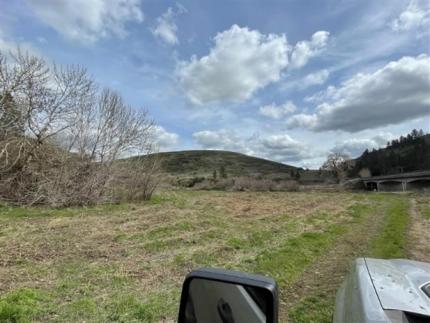
Providing Education and Outreach
Trent Elementary: Biologist Brinkman gave a presentation to fifth grade students at Trent Elementary School about moose biology and management in Washington.
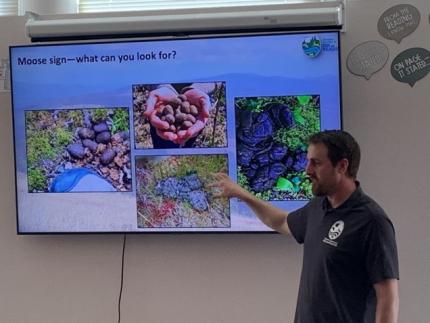
Eagle Scout Project: Wildlife Area Access Manager Dziekan worked with a local boy scout troop to complete an eagle scout project. They installed a personal flotation device loaner station at the Williams Lake Water Access Area.

Conducting Business Operations and Policy
Riparian Shrub Planting Project: This past week a freight company delivered eight rolls of deer fence that the Spokane Audubon Society purchased for the upcoming riparian winter shrub habitat project at Swanson Lakes Wildlife Area. The Spokane Audubon Society will also be purchasing all the shrubs for the project which makes their total donation over $8,200. The Spokane Chapter of Pheasants Forever will also be involved with their volunteers and funding. There will be approximately 780 trees and shrubs planted and then enclosed with deer fence to protect them from deer and possibly trespassing cattle.
Managing Wildlife Populations
Wolf Management: Biologist Heinlen investigated the mortality signal from a Beaver Creek pack female’s radio collar that the wolf crew found while conducting their annual survey/capture flights. The drop off device was activated, but no sign of a carcass was found. The animal is presumed to still be alive. In addition, public reports suggested the Beaver Creek pack was still using their traditional areas over the winter and early spring, and a Washington Department of Fish and Wildlife wolf biologist was able to confirm at least two animals are still in the territory.
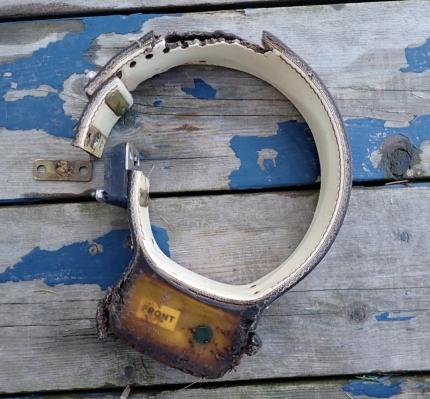

Spring Mule Deer Surveys: Biologists Fitkin and Heinlen completed spring mule deer surveys classifying over 1500 mule deer. The raw counts yielded a ratio of 44 fawns to 110 adults. This is above both the 5-year and long-term averages and indicates better than average post-winter fawn recruitment this year.

Rattlesnake Den Monitoring: Biologist Fitkin assisted retired U.S. Forest Service Biologist Rohrer in refining the location of and monitoring a northern Pacific rattlesnake hibernacula on the Methow Wildlife Area. In addition to counting around three dozen snakes, two live pit-tagged snakes were detected that were translocated to the general vicinity of the den last fall. This technique of moving unwanted snakes from private property to known den sites when snakes are entering their hibernacula has proven very successful over the years as an alternative to lethal removal.
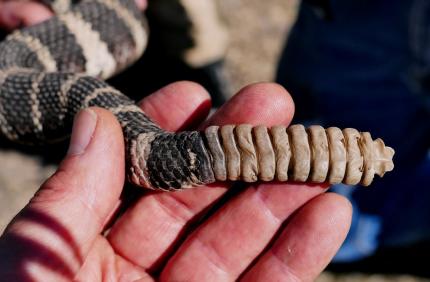

Grouse Area Search Grids and Grouse Lek Surveys: Private Biologist Braaten continues early morning sage and sharp-tailed grouse lek count surveys in Douglas County and is completing grouse area search grids.
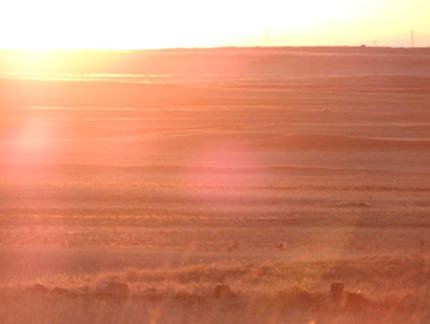
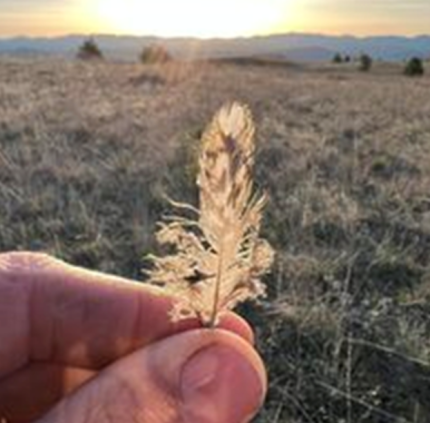
Sage Grouse Surveys: Biologist Morris will finish sage grouse searches this week. He will be searching grids in Grant and Douglas counties without known sage grouse leks, searching for birds and new leks. Morris saw some great sunrises, picturesque landscapes, and sandhill cranes foraging in fallow wheat fields while doing the surveys.
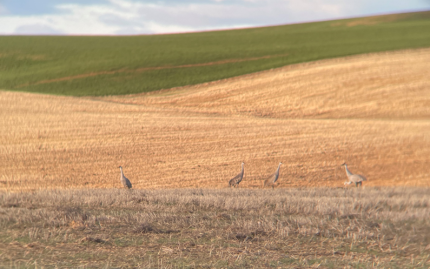
Lek Counts: March marks the beginning of lek counts, and wildlife area staff members have started the yearly early morning task of observing grouse lek sites on the Sagebrush Flat and Big Bend wildlife areas. Staff members attended a brief virtual training on data collection and have been using this new information to log survey data in Field Maps.

Bridgeport Bar Preparation: With spring setting in quickly, wildlife area staff members are working to prepare irrigation infrastructure and equipment in the Bridgeport Bar’s many agricultural fields and shrub rows. Technicians Haney-Williamson and Ruiz have been prepping irrigation, maintaining pivots at Washburn Island, and taking soil samples to prepare for spring seeding.
Providing Conflict Prevention and Education
Wolf Non-Lethal Deterrence Outreach: Wildlife Conflict Specialists’ Bridges and Heilhecker, Supervisor Rickel, Regional Program Manager Haug, Regional Director Hoenes and other Washington Department of Fish and Wildlife staff members participated in a meeting with the United States Fish and Wildlife Service staff members to discuss coordination on wolf issues in the federally managed wolf area of Region 2 that is located west of Highway 97. Recent incidents have highlighted the need to be coordinated for future events so management and staff members met to discuss how to coordinate best and identify what and who will be the main points of contact for the various tasks. This timely meeting will facilitate a common approach to wolf related issues in the federally managed wolf area of Region 2.
Conserving Natural Landscapes
Habitat Plots: Biologist Morris evaluated two recently planted habitat plots. The shrubs that he planted this spring are growing well so far. There are some weeds in both plots that he needs to spray, but overall they are doing well.
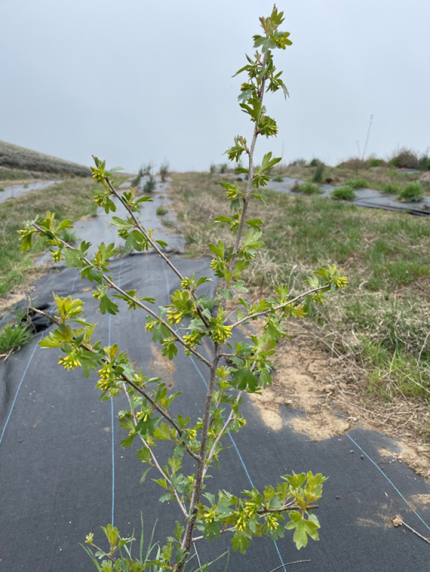
Shrub Planting: Technicians Blanchard and Wilson, and Biologist Cook planted 150 shrubs along the base of a small coulee to increase diversity and increase shrub establishment. This site had been previously planted in 2021, but the following spring was very dry and many of the shrubs did not survive. This was another effort to establish more shrubs in this area. The bottom of the coulee was seeding with native bunchgrasses and further weed control and native forb seeding will follow, hopefully in fall of 2024.
Prescribed Burn in Sagebrush Flat: Wildlife area staff members burned Russian thistle that piled up in a fire break on the Sagebrush Flat Wildlife Area. This month, three staff members completed their red card certification and are looking forward to using what they learned to help with future burns.
Providing Education and Outreach
Shrubsteppe Ecology Field Trip: A group of students from a wildlife ecology class at Washington State University came out to the shrubsteppe and learned about local ecosystems. Biologists Peterson and Blake along with Schroeder, Crowell and Gallie spoke to students about shrubsteppe ecology and the sensitive species that live there. Students learned about pygmy rabbits, sharp-tailed grouse, and sage grouse and how they interact with the landscape. Washington Department of Fish and Wildlife staff members made sure to highlight the management activities that they focus on in this area and what their efforts accomplish.

Wild Turkey Hunters: Private Lands Biologist Braaten fielded many hunter access questions to hunters interested in the upcoming wild turkey seasons.
2024 Private Lands Work Party: Twelve private lands biologists from around the state attended the 2024 Washington Department of Fish and Wildlife Private Lands Work Party in Electric City. Supervisors and Private Lands Section Manager McCanna, as well as Region 2 Regional Program Manager Haug also attended. Hosts Braaten and Baarstad designed the three-day event to focus on safety, equipment use training, habitat project initiation and completion, as well as team building.
The group visited a 16-year-old planting in Douglas County and discussed project objectives, how to work with landowners, and how to plan and execute projects. They also installed a few hundred fence markers around fencing of a habitat plot for a landowner to help reduce bird collision with the fence. On the second day, staff received training on several pieces of agriculture equipment typically used for completing habitat projects. Staff members received training from experienced staff members on how to safely use and operate equipment. All participants were grateful for the opportunity provided through the work party.
Upon completion of the two-day work party, approximately 500 trees and shrubs were planted, and two acres of food plots were seeded.
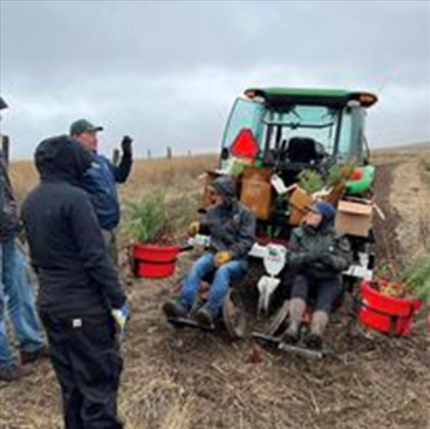
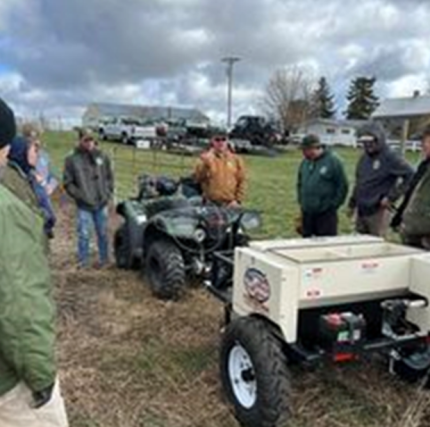
Dew Drop no-till all-terrain vehicle drill.
Conducting Business Operations and Policy
Western Association of Fish and Wildlife Association (WAFWA) Washington Grouse Conference Field Trip Planning: Private Lands Braaten completed the field trip route and tour bus booking for WAFWA Grouse Conference in Wenatchee in August 2024.
Other
Incidental Observations: Spring has sprung, and babies are already on the ground for some critters.
Road Maintenance: This month wildlife area staff members have been tackling various road maintenance tasks. They added material to roads across the wildlife areas that were eroded over the winter months, strengthening them, and making them safer. Other wildlife area staff members have focused on spraying roads on various wildlife areas for annual grasses and broadleaves.

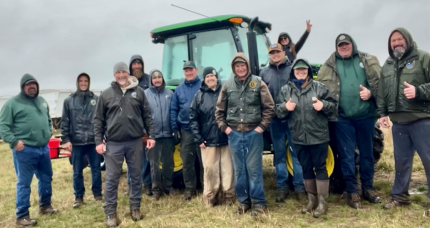
Gopher Snake Release: Gopher snakes that staff members found in hibernacula underneath the floorboards during the headquarters remodeling were released earlier this month. After unearthing these snakes during a reflooring project in the office, Assistant Manager Blake sought council from Beck, a retired herpetologist and professor from Central Washington University. Blake followed his recommendations and kept the snakes contained in the correct conditions through the winter. With the warmer weather and start of spring, wildlife area staff members were happy to release them back outside.
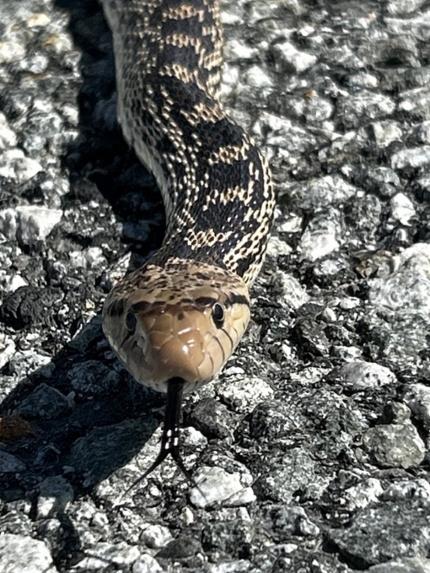
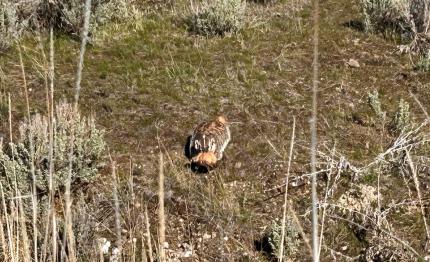
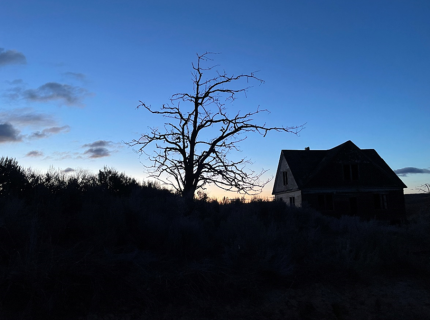
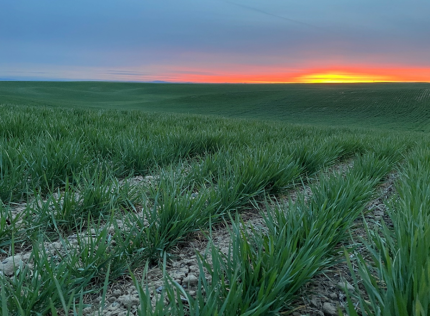
Managing Wildlife Populations
Cleman Mountain Bighorn Sheep Survey: District 8 Biologist Wampole, Assistant Biologist Moore, Wenas Wildlife Area Natural Resource Technician Frame, and Tulalip Tribal Biologist Collins conducted lamb/ewe counts of the Cleman Mountain bighorn sheep population to inform lamb recruitment. This information is used for the continued population monitoring following the experimental protocols for Test and Remove.
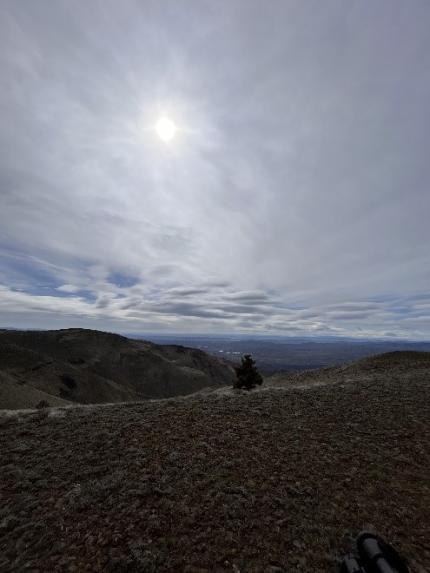
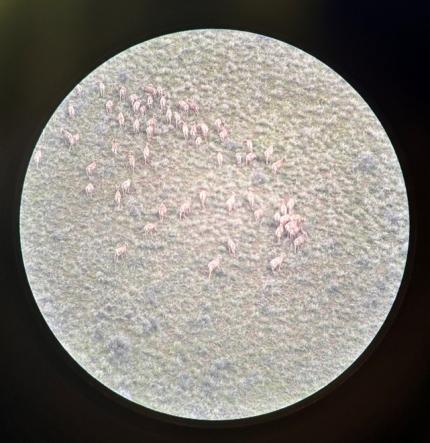
Yakima Canyon Bighorn Sheep Survey: District 8 Wildlife Biologist Wampole, Assistant Biologist Moore, Conflict Technician Leuck, Conflict Specialist Wetzel, and Ungulate Assistant Biologist Kyle, and tribal biologists from the Tulalip and Yakama Tribes collaborated to conduct lamb-ewe counts for the Yakima Canyon bighorn sheep population. These counts are crucial for understanding lamb recruitment and are part of ongoing population monitoring efforts following the experimental protocols for Test and Remove.
Bat Box Installation: District 8 Wildlife Biologist Wampole and Conflict Specialist Wetzel worked to install bat boxes to replace recently disbanded barns. The barns were removed as part of a larger land restoration plan, but they were identified as a summer maternity roost in the previous years. Bat boxes were installed this spring to provide returning bats with opportunity for a secure roost site. Biologists will monitor boxes for activity and work to install additional sites.

Motus Tower Installation: District 4 Wildlife Biologist Fidorra assisted with the installation of a new Motus tower in Benton County. Fidorra met with the partner in flight biologist and U.S. Fish and Wildlife Service staff members to install the new tower. The tower is a first in District 4 and one of only two in all of eastern Washington. The Motus system can be used to track wildlife as small as butterflies. Washington Department of Fish and Wildlife intends to develop more studies using the system for bats and bird monitoring in the future.
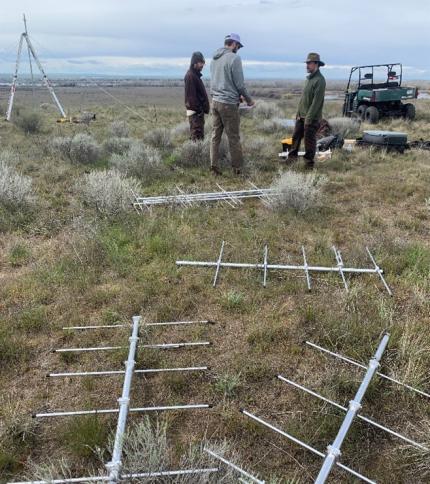
Ferruginous Hawk Nest Platforms: District 4 Wildlife Biologist Fidorra checked for occupancy at six nest platforms installed for ferruginous hawks in District 4. Two platforms were removed prior to the breeding season at the request of a wind development project. None of the platforms had signs of use this season.
Bluebird Nesting Boxes: District 4 Wildlife Biologist Fidorra made a quick check on a volunteer project installed in Benton County. Fidorra checked 20 nest boxes, installed for swallows and bluebirds, for nests from last season. It might take some years for the site to become established by target species. For the second year in a row, one of the boxes appeared to be used by ash-throated flycatchers, an uncommon Washington breeding bird.

Ferruginous Hawk Data: District 4 Wildlife Biologist Fidorra was part of a team working to address data collection at historical ferruginous hawk nesting sites. The team worked to develop a method for documenting and differentiating sites where nesting structure was missing, where nests were destroyed or missing, or where habitat within the vicinity had been permanently converted.
Providing Recreation Opportunities
Wenas Wildlife Area Sheep Company Shooting Range: Wenas Wildlife Area staff members chemically treated the Sheep Company Shooting Range. This treatment includes the shooting lanes, berms, walkways, as well as the parking lot. Such treatments help to ensure that fire danger is kept to a minimum while helping to keep noxious weeds at lower levels in disturbed portions of the wildlife area. This has the benefit of providing a well-kept recreation site for the popular practice of target shooting on the wildlife area.
Providing Conflict Prevention and Education
Wenas Wildlife Area Spring Fence Checks: Wenas Wildlife Area staff members checked over 20 miles of elk fence on the boundary of the wildlife area to look for any winter damage. Damage to the elk fence will be fixed promptly to prevent elk from going onto private lands outside of the fence. This will help prevent wildlife conflict on the wildlife area.
Rattlesnake Hills Elk: District 4 Wildlife Conflict Specialist Hand had contact with landowners on Rattlesnake Mountain concerning elk activity, damage occurrence, and damage permit issuance. Late night hazing activities were employed with a few small groups of bull elk returning back onto the Hanford Monument.
Trail Camera Deployment: District 4 Wildlife Conflict Specialist Hand deployed a trail camera in an area on Rattlesnake Mountain that elk have historically used to leave the Hanford Monument for winter wheat crops. Small groups of young bulls have been showing up on camera during nocturnal hours and retreating back to Hanford prior to sun-up. Information is being relayed to landowners to assist with their hazing activities.
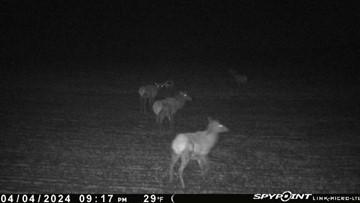
Plymouth/Paterson Deer Patrols: District 4 Wildlife Conflict Specialist Hand monitored several large wine grape operations along the Columbia River between Paterson and Crow Butte for deer damage. Very minor deer activity is occurring in the vineyards currently.
Silver Dollar Livestock Producer Check-Ins: District 4 Wildlife Conflict Specialist Hand continued to check in with landowners in the Silver Dollar and Blackrock areas concerning predation during calving operations. No major problems or concerns have developed this year and mild winter weather conditions were beneficial.
Kittitas County Conflict: District 8 Conflict Technician Leuck and Conflict Specialist Wetzel hazed some elk from areas in Kittitas County. Elk ventured to areas in Thorp, Vantage, Kittitas, Badger Pocket, and Cle Elum, mostly they were following migratory routes and visiting some crop fields. Elk have been hazed away again from I-90 in some locations, however some elk have been struck on I-90.
Conflict Specialist Wetzel tasked an agency range rider to work on wolf issues from the Lauderdale to Kittitas area of the old Naneum Pack territory.
Yakima County Conflict: District 8 Conflict Technician Leuck and Conflict Specialist Wetzel checked for elk in the Tampico and Cowiche areas and inspected fences in those locations. The elk appear to have moved up and away from the winter damage areas.
Conserving Natural Landscapes
Oak Creek Wildlife Area Weed Control: Oak Creek Wildlife Area Assistant Manager Charlet and Natural Resource Technician O’Brien begin control of noxious weeds on the Oak Creek and Cowiche units. Efforts focus on the control of Scotch thistle but also include a wide variety of noxious weed species.

Wenas Wildlife Area – Spring Weed Treatment: Wenas Wildlife Area Natural Resource Technicians Stoltenow and Janes sprayed the firebreaks along the southern portion of the wildlife area elk fence. This is in an effort to reduce the fuel load in those areas and help control the spread of potential wildfires. Technicians Janes and Stoltenow also began spot spraying for Scotch thistle in the wildlife area. In addition, wildlife area staff members sprayed around parking lots and kiosks throughout the wildlife area to prevent weeds from growing.
Wenas Wildlife Area – Spring Planting: Wenas Wildlife Area Technicians Stoltenow and Janes finished planting the last of the plugs that will be planted this spring. These plants went in along riparian areas in Black Canyon and McCabe.
Byron Unit Shrub Planting: Sunnyside-Snake River Wildlife Area Manager Kaelber, Assistant Manager Ferguson, and Natural Resource Technician Cardenas continue to plant shrubs for the Byron Unit fire restoration shrub planting. They are receiving help from Private Lands Biologist Manderbach, a volunteer from the fish program, and occasional other volunteers. The planting should be completed soon. All of the shrubs that have been planted this season look great so far. They will continue to be monitored and possibly watered as the summer heat comes on.

Wapato Exit Fire: Sunnyside-Snake River Wildlife Area Manager Kaelber and Natural Resource Technician Cardenas checked the location of a fire near the Wapato exit to monitor the regrowth of cottonwood trees within the area. So far, the cottonwoods are showing great regrowth and will be monitored throughout the year. The cottonwoods that grow in the riparian areas of the Yakima River are important because they provide wildlife habitat and shade the river keeping it cooler for rearing and migrating salmon. Sunnyside-Snake River Wildlife Area staff members will treat the area for Scotch thistle, poison hemlock, and houndstongue in upcoming weeks.
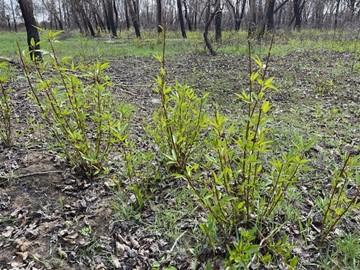
Providing Education and Outreach
Presentation to Field and Streams Club: District 8 Wildlife Biologist Wampole presented an update on the Colockum Elk Herd population, current knowledge of the Kittitas mule deer, and the on-going Test & Remove bighorn sheep study.
Salmon Summit: April 15 through April 16 was the annual Salmon Summit at Columbia Park in Kennewick. Approximately 6,000 students, teachers and parents gathered to release fall chinook fry that they have raised from the egg stage to fry. Students released fish into the Columbia River and then spent the remainder of the day learning about many aspects of the salmon life cycle, PIT tagging, and natural resources.
Sunnyside-Snake River Wildlife Area Manager Kaelber, Region 3 Private Lands Biologist Manderbach, and Fisheries Technician Meehan scooped fish and handed them out each day. Kaelber and Manderbach also worked the Washington State Department of Fish and Wildlife booth teaching students about the types of animals that live in Washington. The students enjoyed seeing and touching a variety of animal pelts, skulls, horns, and antlers.
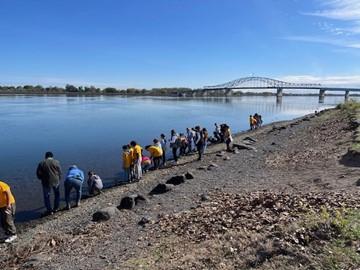
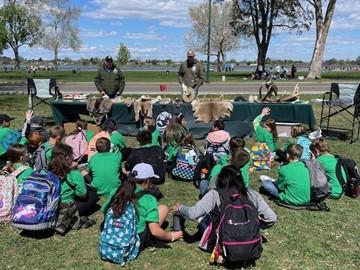
Conducting Business Operations and Policy
Firearms Training: District 8 Wildlife Biologist Moore attended and completed a two-day agency-approved firearm safety course as required by the position description under Policy 7011.
Washington Waterfowl Advisory Group (WWAG) Meeting: District 8 Wildlife Biologist Moore assisted the Waterfowl Section in hosting the advisory group meeting at the Yakima Arboretum. The meeting had a focus on onboarding the eight new WWAG members. The section delivered thorough presentations on the many ongoing waterfowl research and monitoring projects. There is more information about the Washington Waterfowl Advisory Group on our website.
Washington Waterfowl Advisory Field Tour of Sunnyside Unit Wetlands: Sunnyside-Snake River Wildlife Area Manager Kaelber led a field tour with the Washington Waterfowl Advisory Group, regional staff members, and statewide waterfowl specialists. The group toured the Brady Wetland which is the location for a wetland restoration project that is being funded by state duck stamp funds. The group was also shown a short demonstration of the amphibious Marsh Master machine that is used throughout the wetlands for maintenance activities.
Grandview Wastewater Treatment Facility and Byron Unit Tour: A site tour of the Grandview Wastewater Treatment Plant and Byron Unit of the Sunnyside-Snake River Wildlife Area was attended by Washington Department of Fish and Wildlife staff members, Ducks Unlimited, and Yakima Audubon. The tour showed the existing ponds that are pumped from the treatment facility to the Byron Unit. The future operations of the treatment plant may call for these ponds to dry up. There is potential for an alternate out flow of treated water that would keep water flowing through the Byron Unit and create additional wetland and pond acres. This site has historically been very productive for nesting waterfowl and provides habitat for a diverse variety of wildlife.
Other
L.T. Murray Wildlife Area: L.T. Murray Wildlife Area Assistant Manager Winegeart checked all herbicides being used on the L.T. Murray Wildlife Area against the Environmental Protection Agency (EPA) bulletins for new restrictions related to potential accidental take of endangered species. No new restrictions were found.
Natural Resource Technicians Blore and Winegeart conducted a survival survey on the 2023 fall Vantage Highway fire restoration sagebrush planting. They counted 296 10ci plugs and 154 40ci plugs. Fifty-five percent of the 10ci plugs counted were alive, but many seem to be missing from known planting locations due to high winds, rodents, or ungulates and many will probably not make it through the dry summer months. Survival of the 10ci plugs will most likely be much lower. Ninety-three percent of the 40ci plugs counted were alive and appeared much healthier than the 10ci plugs and stand a greater chance of surviving the summer.
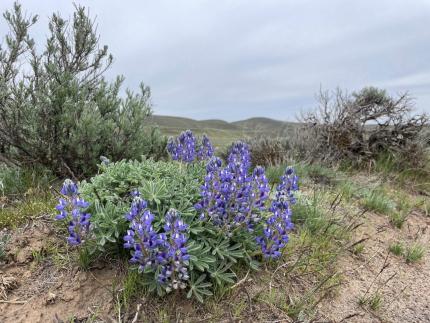
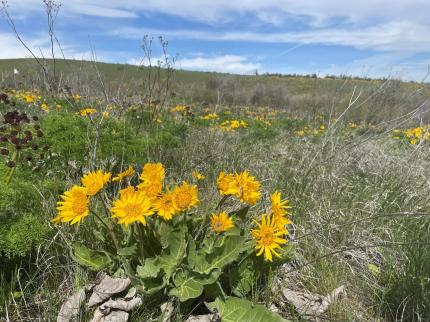
L.T. Murray Wildlife Area Hay Delivery: L.T. Murray Wildlife Area Natural Resource Technician Blore and Assistant Manager Winegeart helped with the delivery and tarping of 275 tons of new high-quality hay at the Joe Watt elk feed site.

L.T. Murray Wildlife Area Automated External Defibrillators: L.T. Murray Wildlife Area Natural Resource Technician Blore and Assistant Manager Winegeart set up two new Automated External Defibrillators (AED). One will be set up at the wildlife area shop and one in the Ellensburg office that can also be checked out for field projects such as remote volunteer events.
Oak Creek Wildlife Area Automated External Defibrillators: Oak Creek Wildlife Area Natural Resource Worker O’Brien set up a new AED in the Oak Creek shop providing easy access to wildlife area staff members in the case of an emergency.
L.T. Murray Wildlife Area Quilomene Unit Grazing: L.T. Murray Wildlife Area Natural Resource Worker Blore worked with the Quilomene Unit grazing lessee to repair pasture fence ahead of cows coming on the first week of May.
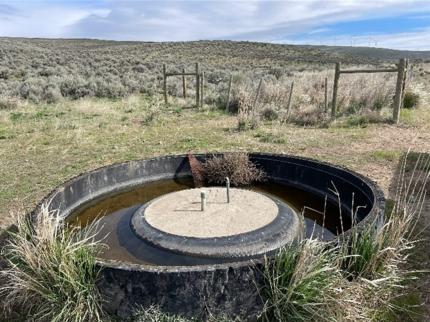
Invasive Annual Grass Workshop: Region 3 Private Lands Biologist Manderbach attended an all-day virtual workshop titled ‘Defending and Growing the Core by Breaking the Cycle of Invasive Annual Grasses’ put on by University of Wyoming’s Institute for Managing Annual Grasses Invading Natural Ecosystems (IMAGINE) along with Working Lands for Wildlife and many other agencies and organizations. There were multiple presenters from multiple states and agencies who all provided useful information. Cheatgrass, ventenata, and medusahead were the main topics and landscape wide efforts to prevent or reduce invasion was a main strategy, among others.
Blackrock Greenstrip Fuel Break Pilot Project: Region 3 Private Lands Biologist Manderbach checked out the Blackrock greenstrip planting off of Highway 241 from 2021 ahead of an upcoming meeting with the greenstrip fuel break team. The greenstrip on the west side of the highway is very green right now and will hopefully remain that way throughout the dry summer months. The planting on the east side of the highway unfortunately did not take as well and will likely need to be reseeded.

Managing Wildlife Populations
Klickitat Wildlife Area Spring Road Survey: Biologists Wickhem and Bergh, Assistant Wildlife Area Manager Roy, Conflict Specialist Jacobsen, Regional Wildlife Program Manager Jonker, and Volunteer VanLeuven took part in the annual spring road survey. They counted and classified mule deer on and around the Klickitat Wildlife Area. These routes have been surveyed each spring for more than 40 years! This season, the team counted 262 deer and classified 251. These results are on the lower side compared to recent years, but not bad considering the morning routes were plagued by fog and low clouds. The crew recorded 54 fawns for every 100 does, which is slightly above the 10-year average of 50 fawns for every 100 does. This “average” ratio was expected after a relatively mild winter.
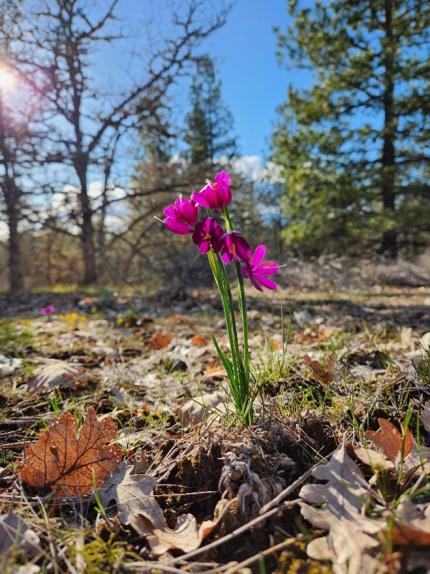

Klickitat Mule Deer Mortality Investigation: Biologists Wickhem and Ott investigated one mortality (death) signal from a collared female mule deer this week. Unfortunately, the carcass had been heavily scavenged by the time the pair arrived, making it impossible to definitively determine the cause of death. However, the pair did find signs of bear, cougar, and coyote in the surrounding area.
This deer was part of a 4-year study being conducted throughout Game Management Units (GMU) 388 and 382 to track the annual movements of female mule deer and locate important migration corridors. Staff members are also attempting to determine cause of death when a tracked animal dies, which has proven to be difficult. In winter 2021, 81 collars were deployed for this effort. Twenty-two collars were deployed in the winter of 2022 and 23 were deployed in the winter of 2023. Most of the 2023 deployments were replacing study deer that died over the first two years of the study. We are nearing the end of the study, so no more collars will be redeployed for this project.
Providing Recreation Opportunities
Improving Private Land Access: Private Lands Biologist Gray worked with a landowner enrolled in the Private Lands Access Program in Klickitat County to improve access over a property fence where a gate wasn’t an option. Volunteers worked to build this staircase to allow for safer access over the barbed wire fence. All properties enrolled in the access program are walk-in access only.
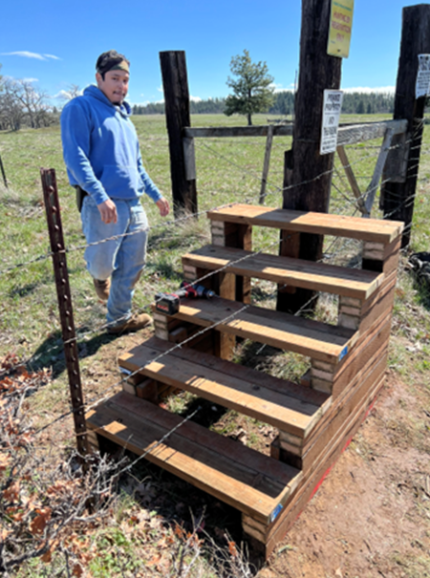
Conducting Business Operations and Policy
Necropsy Training: Biologists Wickhem, Bergh, Ott, Holman, Wildlife Conflict Specialist Jacobsen, and Assistant Wildlife Manager Risley attended necropsy (animal autopsy) training held in Region 5. The class was taught by Washington Department of Fish and Wildlife (WDFW) Veterinarians Mansfield and Haman and Washington State University Veterinary Pathologist Oliveira. Staff members are often required to conduct necropsies on a variety of wildlife species to determine cause of death, take veterinary samples, and track wildlife disease outbreaks. The class consisted of a lecture portion and hands-on experience.
Staff members from around the state saved carcasses of animals that were either found or euthanized by WDFW. This gave attendees the opportunity to necropsy an elk, cougar, bear, porcupine, river otter, beaver, a few coyotes, several birds, and multiple deer. All of the necropsy specimens were collected opportunistically, and no animals were killed specifically to be used for this training.
The elk and the bear had unknown illnesses that led to their euthanization, so instructors and attendees were tasked with determining what each animal was afflicted with. Numerous samples were taken from the bear for later analysis at the pathology lab. Eventually, they found a huge abscess below one of the elk’s antlers that likely caused the unnatural behavior (walking in circles, disorientation, approaching humans) that led to its euthanization. Thanks to veterinarians Mansfield and Haman as well as pathologist Oliveira for the instruction.
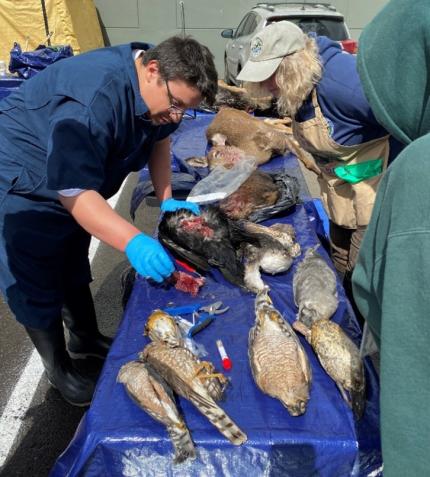
Firearms Recertification Training: Biologists Holman, Bergh, and Wickhem along with Conflict Specialist Jacobsen completed required firearms recertification training. Policy requires in person demonstration of safe handling, shooting proficiency, and general familiarity with state-issued firearms every three years for non-enforcement Washington Department of Fish and Wildlife (WDFW) staff members who carry firearms. Firearms are used by WDFW biology staff members to euthanize injured animals, haze wildlife away from agricultural or residential areas, and to collect specimens for examination. Thanks to Wildlife Program Firearms Instructor Dazey for running the recertification practicum.
